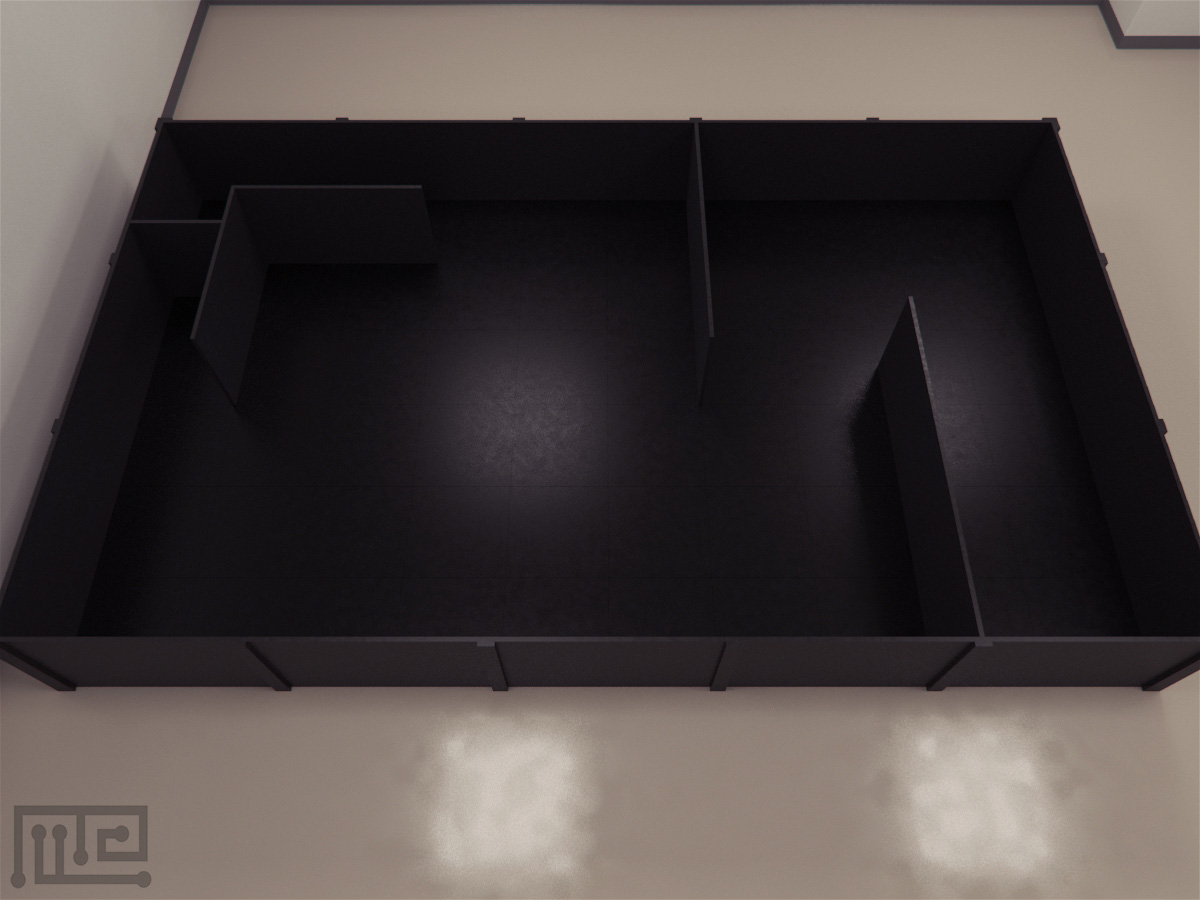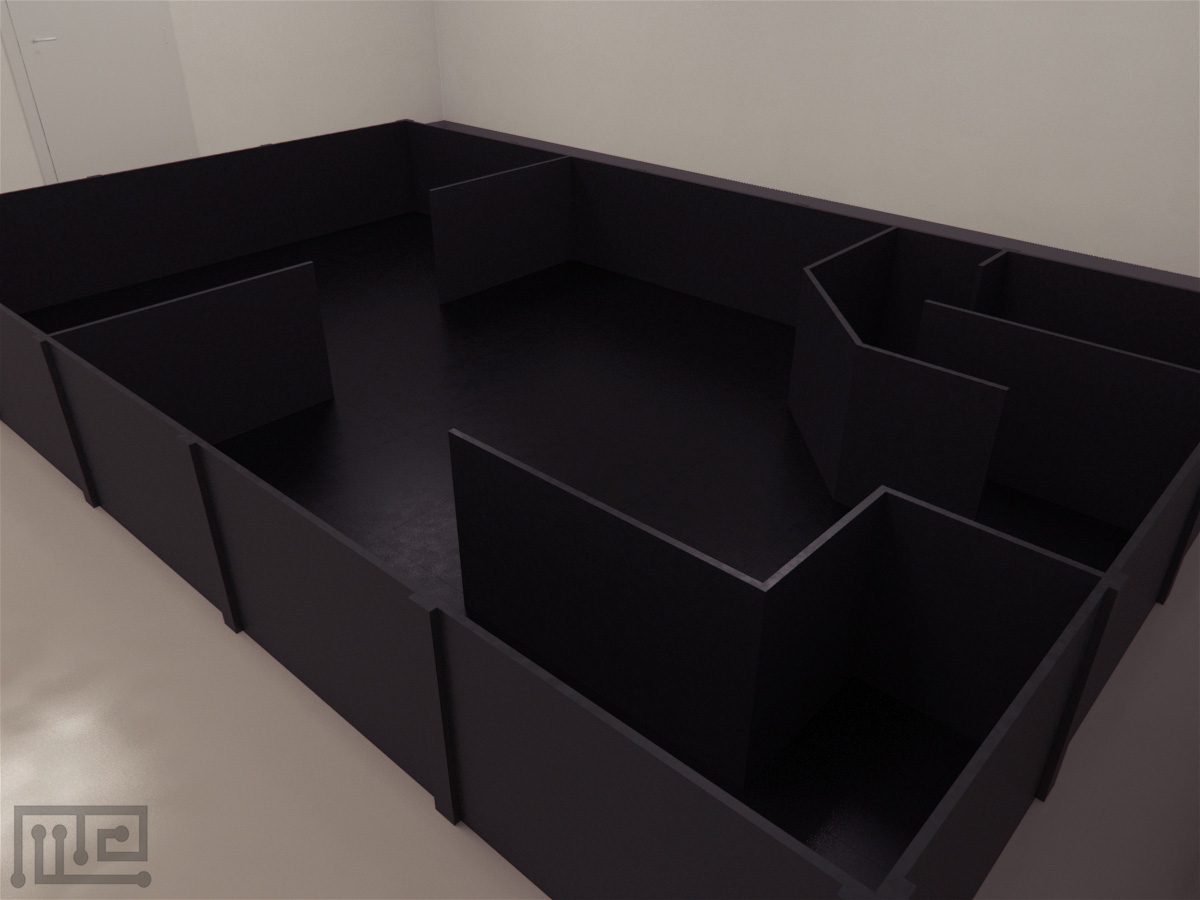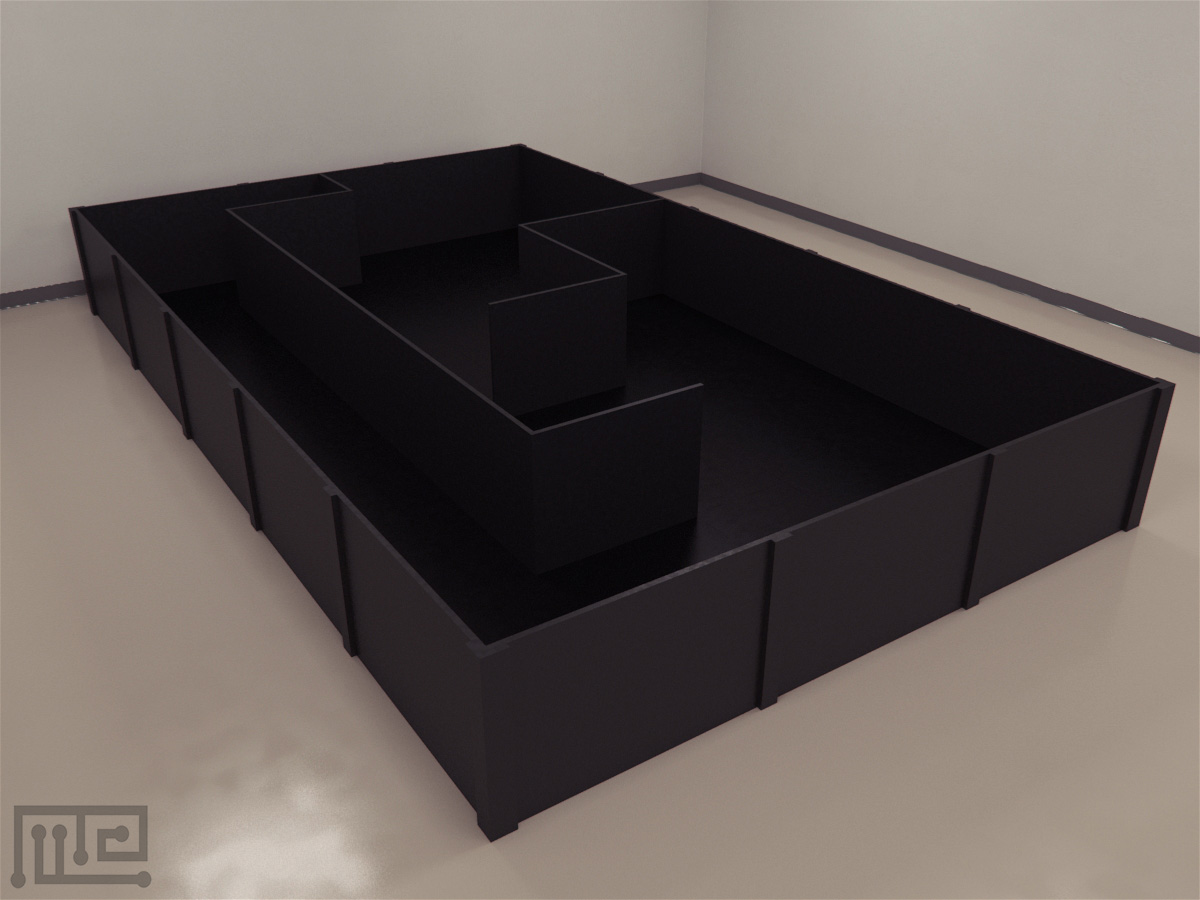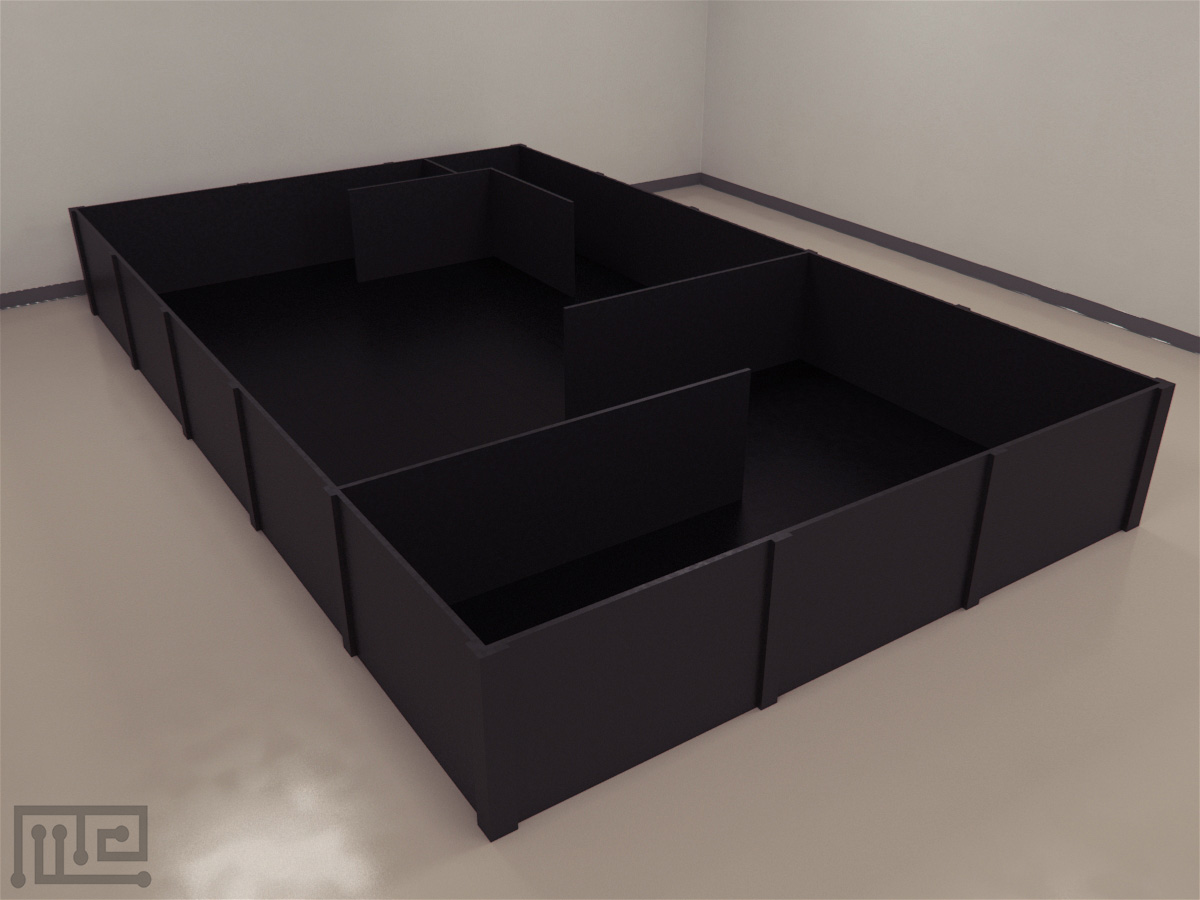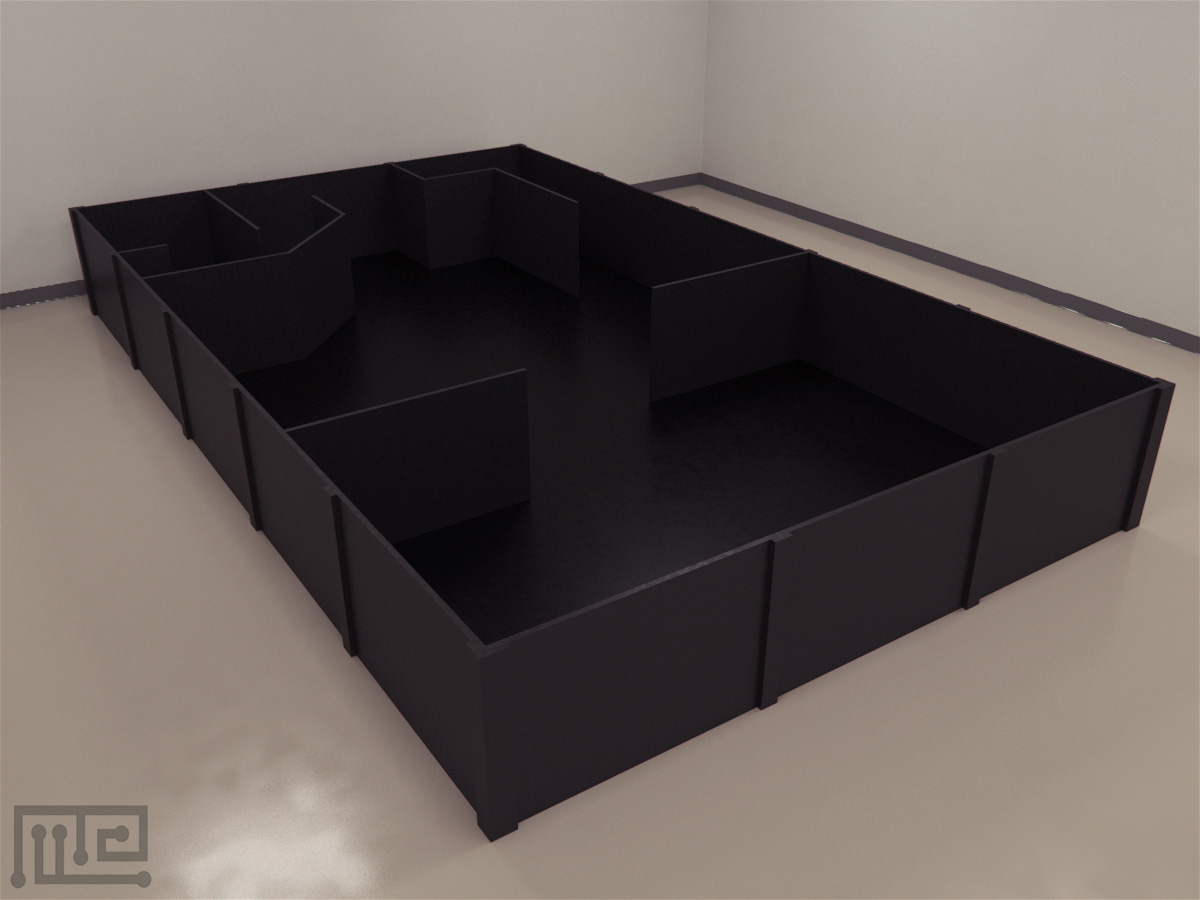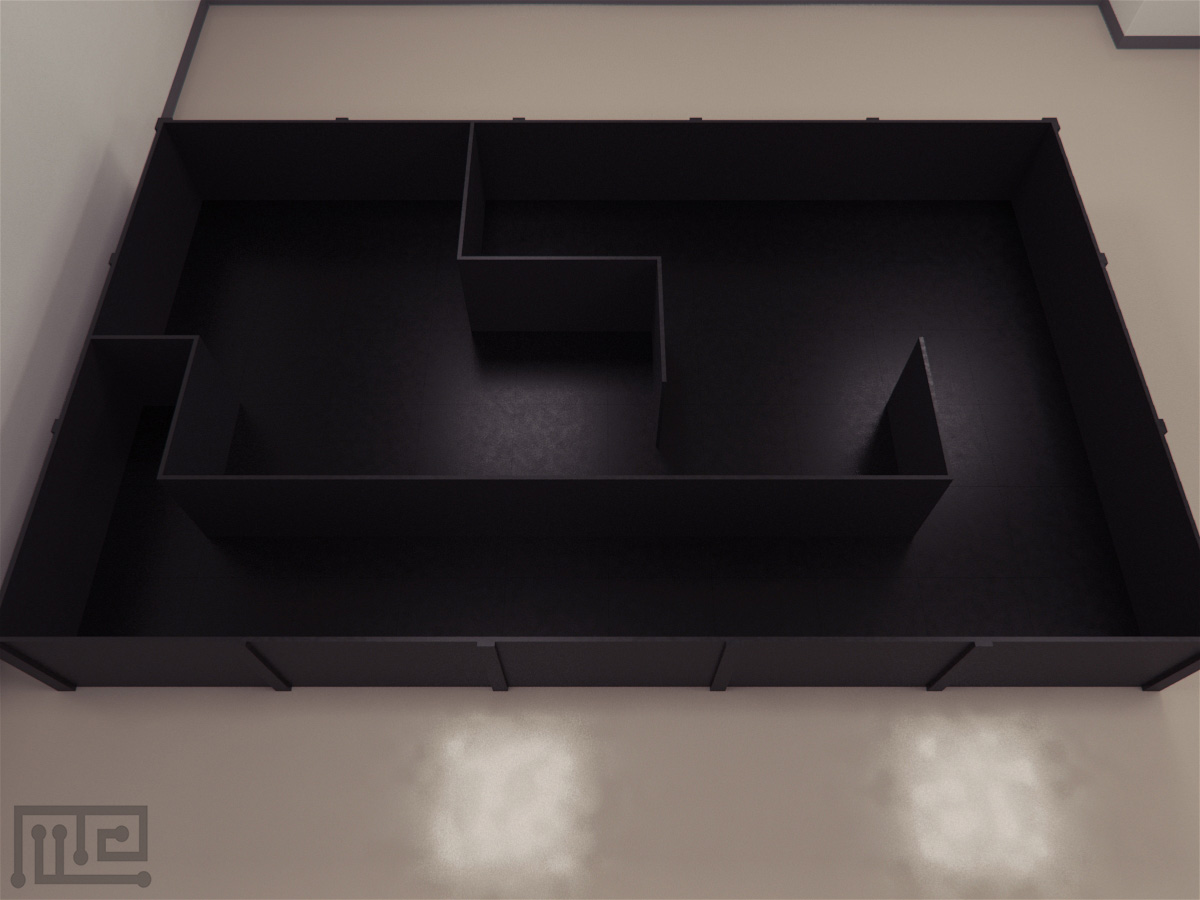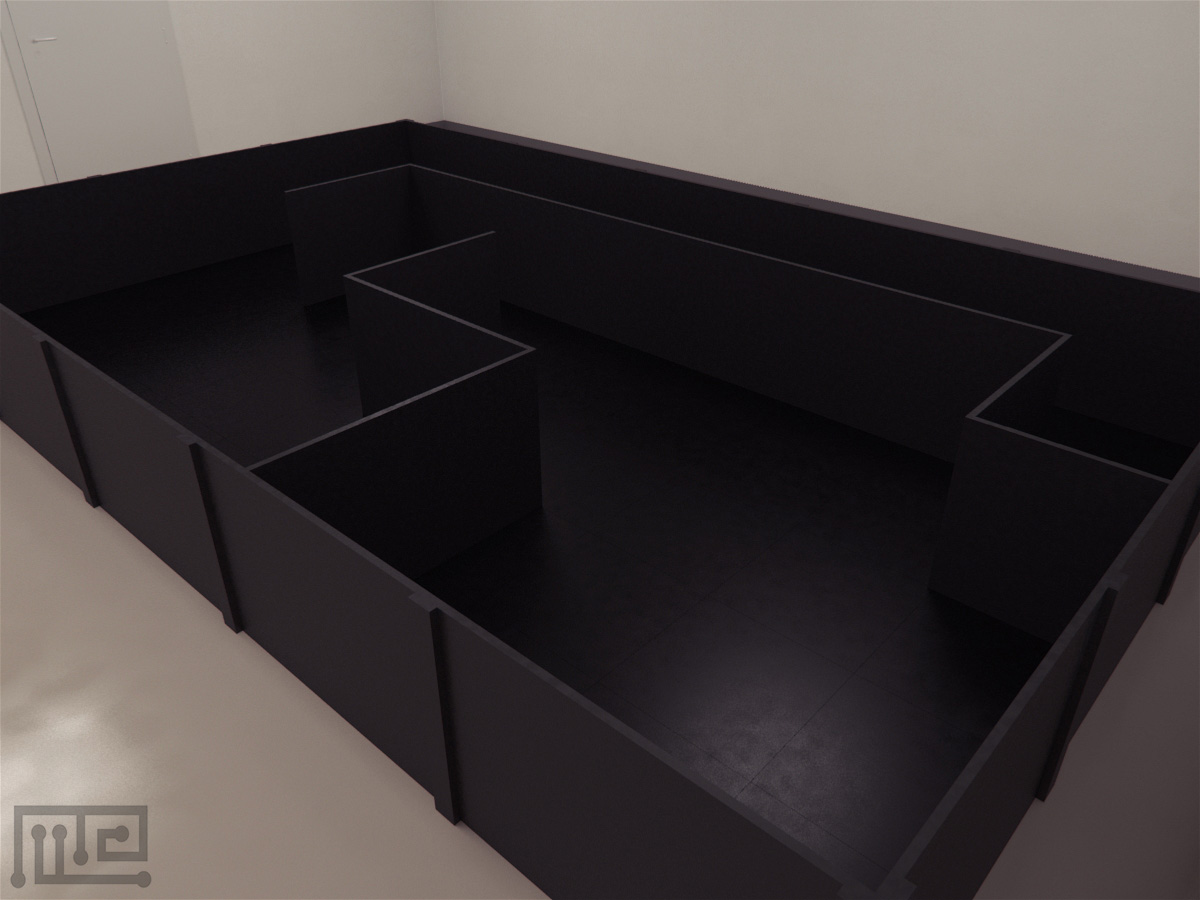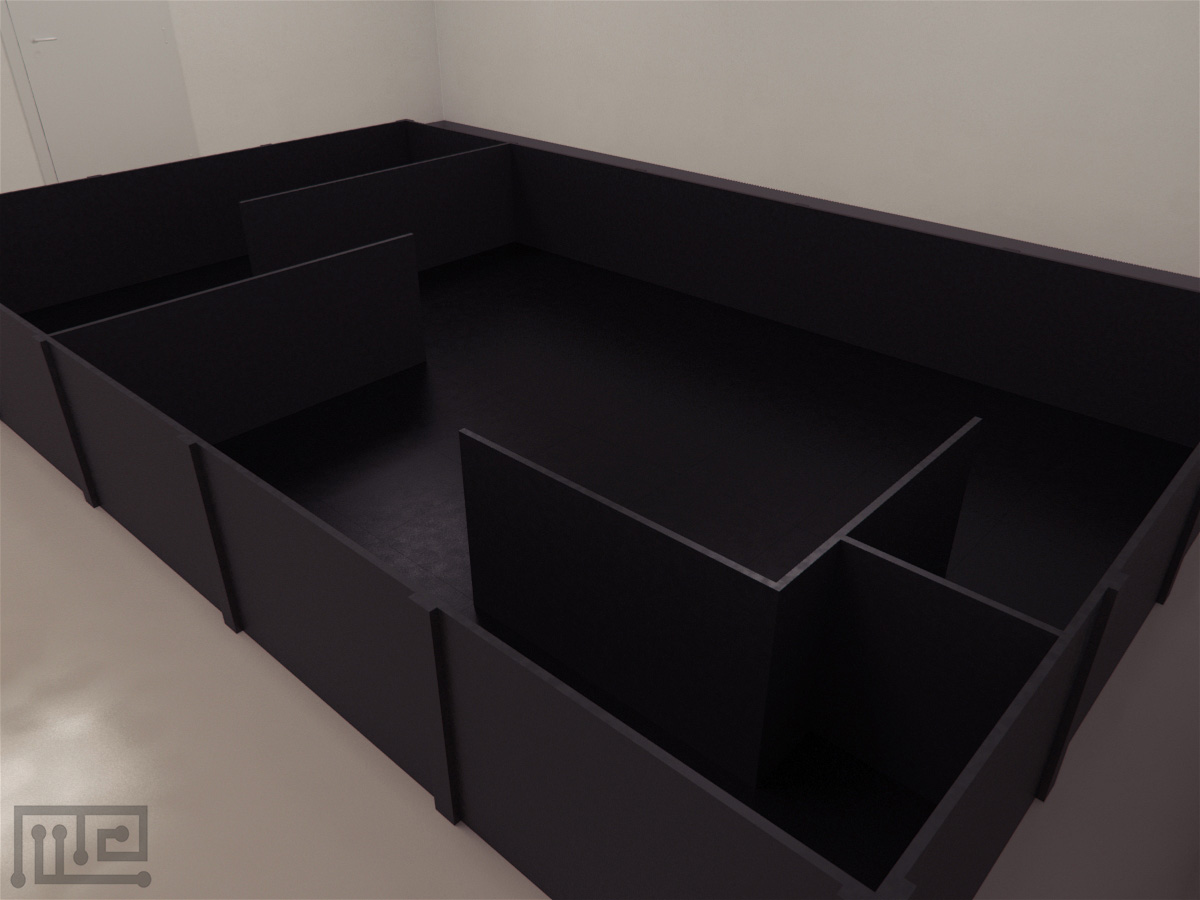The Pig Hebb Williams maze was used in an experiment by Ingrid C. de Jong et al. (1999) to study learning and memory in pigs. It consisted of a square area with moveable internal walls, allowing the maze to be configured differently for trial. The maze configurations were developed using the concept of the Hebb–Williams maze.
In the experiment, the maze was located in a separate room without olfactory, auditory, and visual contact with other pigs.
Pigs were food deprived for 12hr and were trained to find a food reward (30 g of standard pelleted pig food) at the end of the maze.
Maze Engineers offer the Pig Hebb William Maze. Custom coloring and customization are available upon request.

